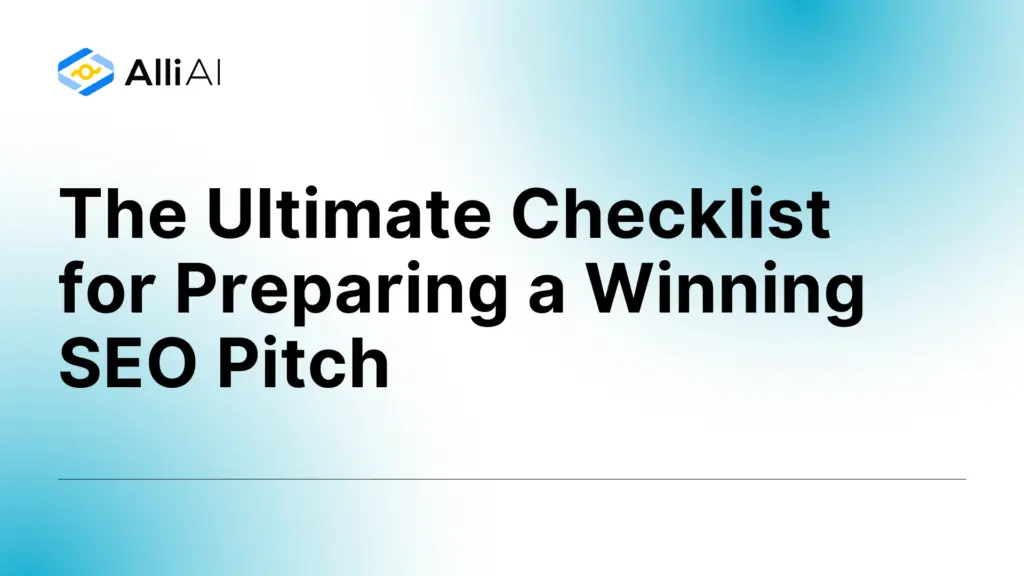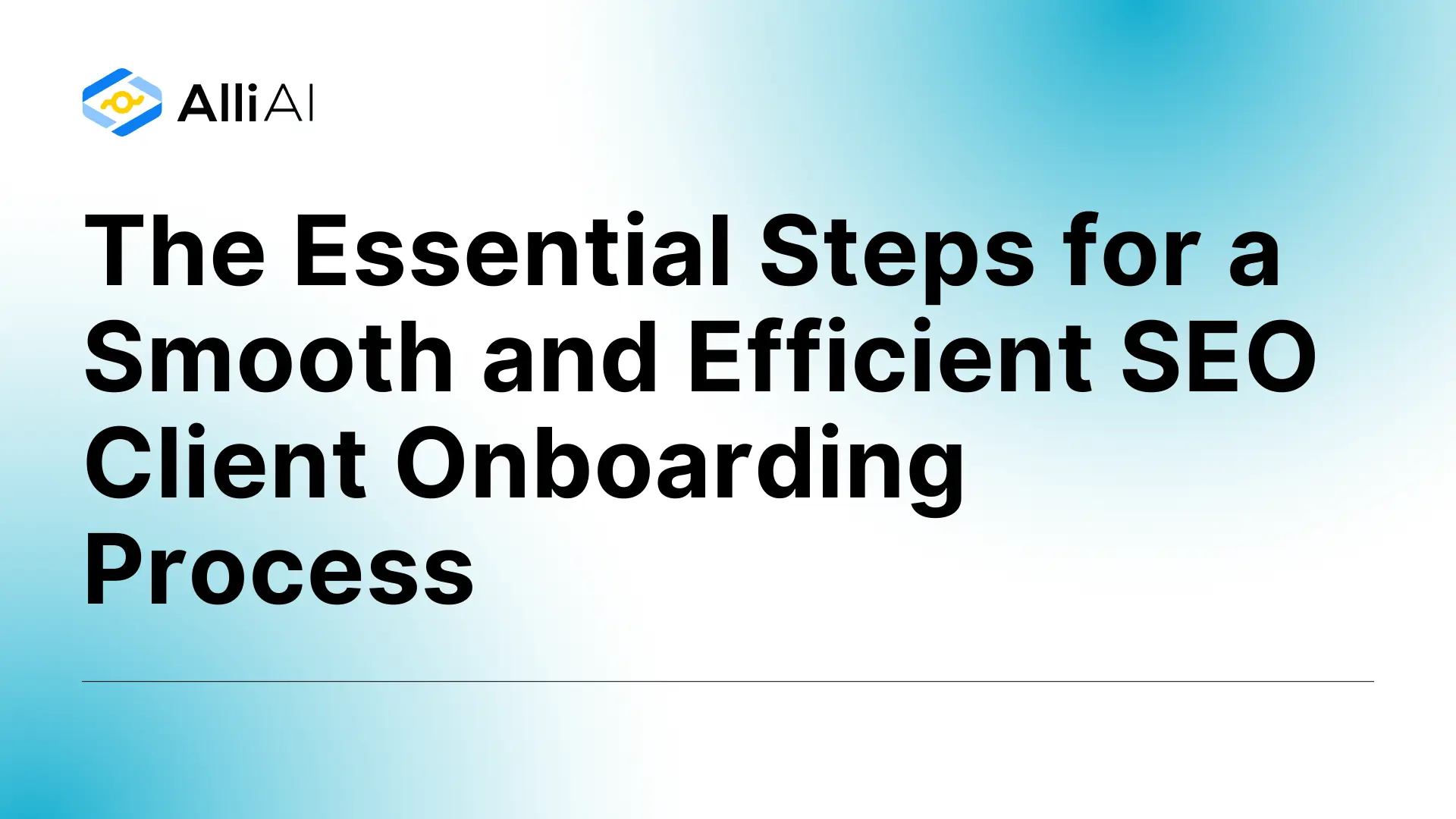Are you struggling to win new SEO clients despite having the skills and expertise to deliver results? The challenge isn’t just about having SEO knowledge — it’s about effectively communicating your value proposition in a way that resonates with potential clients. The solution lies in creating a structured, compelling SEO pitch that addresses client needs while showcasing your expertise. This approach has helped countless agencies transform their client acquisition process, with many reporting conversion rate improvements of 30-50% after implementing a strategic pitching framework.
In today’s competitive digital marketing landscape, your ability to craft a winning SEO pitch can be the difference between landing that dream client and watching them sign with your competitor. Let me walk you through a proven, step by step process that will help you create persuasive SEO pitches that convert prospects into clients.
Step #1: Research Your Prospect’s Business Thoroughly
Begin by conducting comprehensive research about your prospect’s business, industry, and digital presence. This foundational step demonstrates your commitment and allows you to tailor your approach effectively.
Request access to their Google Analytics and Google My Business accounts before your pitch meeting. This provides valuable insights into their current digital performance. Additionally, utilize tools like MozLocal to assess their local SEO status and platforms such as SEMrush to gather data on traffic patterns, keyword rankings, and competitive positioning.
Create a SWOT (Strengths, Weaknesses, Opportunities, Threats) analysis specifically focused on their SEO performance. This structured approach helps organize your insights and identifies clear areas where your services can provide value. Your analysis should examine:
- Content strengths and weaknesses
- Keyword opportunities
- Technical threats to their online visibility
Pro tip: Focus your research on understanding their business goals first, then connect those goals to specific SEO opportunities. This business first approach will set you apart from competitors who lead with technical jargon.
Fail to research thoroughly, and you won’t be able to personalize your pitch effectively—it’s as simple as that.
Step #2: Conduct a Preliminary SEO Audit
Perform a basic SEO audit that highlights specific issues on the prospect’s website. This demonstrates your technical capability and provides immediate value before you’re even hired.
Focus your audit on critical areas such as:
- Indexability issues
- Site structure problems
- Missing meta descriptions
- Broken links
- Duplicate content
- Page speed concerns
When presenting audit findings, translate technical issues into business impact statements. For example, rather than simply noting “poor mobile optimization,” explain how this deficiency is likely causing them to lose mobile customers to competitors with better user experiences.
Document your findings visually using screenshots, highlighting problematic areas directly on their website. This makes abstract SEO concepts more concrete and helps decision makers visualize the issues you’re describing.
Remember: Balance identifying problems with proposing solutions to avoid appearing overly critical of their current efforts.
Step #3: Analyze the Competitive Landscape
Understanding how a prospect compares to their competitors provides crucial context for your pitch and helps establish realistic expectations.
Perform a competitive analysis focusing on 3-5 direct competitors in the prospect’s industry. Compare key metrics such as:
- Domain authority
- Backlink profiles
- Content depth
- Keyword rankings
- Local search visibility
This analysis helps identify gaps where your prospect is falling behind as well as opportunities for them to gain competitive advantage. According to Semrush’s research on competitive analysis, identifying keyword gaps—keywords that competitors rank for but the client does not—represents untapped potential for increased traffic.
Create clear, visually appealing comparisons that demonstrate where the prospect stands relative to competitors. Charts showing search visibility scores or keyword ranking distributions can be particularly impactful.
For example: “Imagine you’re a local law firm competing against three similar practices in your area. Our analysis shows that while your competitors rank for an average of 250 valuable legal keywords, your site currently ranks for only 75. This represents a significant opportunity to capture market share by targeting these missing keywords.”
Step #4: Define Clear Goals, KPIs, and Expected Outcomes
Establish well defined goals, identify key performance indicators (KPIs), and outline realistic expected outcomes for the SEO campaign.
Set SMART (Specific, Measurable, Achievable, Relevant, Time bound) goals that align with the client’s business objectives. For instance, instead of a general goal like “improve website traffic,” a SMART goal would be “Increase organic traffic to product pages by 30% within 12 months.”
Identify relevant KPIs that will be monitored, which may include:
- Organic traffic volume
- Keyword rankings for target terms
- Organic click through rate (CTR)
- Website bounce rate
- Conversion rate for desired actions
- Number of leads generated from organic search
- Revenue generated from organic traffic
The selection of these KPIs should directly align with the defined SEO goals and the client’s business objectives, as outlined by Marketing Insider Group.
Manage client expectations by being transparent about the fact that SEO is a long term strategy. Use data from your initial website audit, competitor analysis, and industry benchmarks to project potential outcomes.
Warning: Never promise specific rankings or immediate results. Instead, focus on the trajectory of improvement and the compounding benefits of SEO over time.
Step #5: Structure Your Pitch Persuasively
Craft a compelling narrative that guides potential clients through your proposal in a logical, persuasive manner.
Begin with a strong introduction that captures attention and highlights your unique selling proposition. Focus on the long term benefits that SEO can bring to the client’s business, rather than simply listing services.
Adopt a solution oriented approach that demonstrates your understanding of the client’s business, goals, and current SEO standing before presenting solutions. Present a clear, actionable plan that directly aligns with their business objectives and addresses their specific challenges.
Break down your SEO strategy into key areas such as:
- Technical SEO enhancements
- In-depth keyword research
- Onpage optimization
- Content development strategy
- Link building approach
For each area, clearly explain your proposed approach and the anticipated outcomes. Use client friendly language, avoiding overly technical jargon.
Develop a realistic timeline with clearly defined milestones. Break down the strategy into distinct phases, such as:
- Audit & Quick Wins Phase (Month 1)
- Implementation Phase (Months 2-3)
- Growth Phase (Months 4-12)
Pro tip: Tailor your language to the specific client profile. Business owners might be more interested in revenue impact, while marketing professionals may appreciate technical details.
Step #6: Build Trust Through Proof and Transparency
Establish credibility by incorporating relevant case studies, client testimonials, and transparent pricing information.
Select case studies that are highly relevant to the potential client’s industry or specific challenges. Focus on results achieved and their direct impact on the client’s business, quantifying achievements with specific metrics such as:
- Percentage increases in organic traffic
- Improvements in keyword rankings
- Growth in conversion rates
Present these stories in a compelling narrative format, outlining the client’s initial situation, the SEO strategies implemented, and the ultimate positive outcomes achieved. According to Marketer’s Center, case studies that demonstrate specific, measurable results are the most effective for converting prospects.
Clearly define the complete cost of your SEO services and be transparent about your pricing model. Whether you utilize fixed monthly plans, project based fees, or a performance based model, the details should be clearly articulated.
Offer a range of pricing options or tiered service packages to accommodate different budgetary constraints and specific needs. These options can bundle various combinations of SEO services at different price points.
For example: “Our Growth package includes comprehensive technical SEO, content optimization for 10 key pages per month, and proactive link building, while our Starter package focuses on the most critical technical fixes and onpage optimization for your 5 most important pages.”
Step #7: Address Concerns and Guide Next Steps
Anticipate potential objections, demonstrate long term value, and provide clear next steps to close the deal.
Prepare for common concerns such as:
- Cost of services
- Timeline for seeing results
- Overall effectiveness of SEO
- Transparency of your processes
When handling objections, listen actively to understand the underlying concerns, acknowledge them with empathy, and respond with well considered solutions. Leverage relevant case studies and client testimonials to provide proof of your expertise.
Emphasize that SEO is a sustainable strategy that provides long lasting benefits and drives continuous growth, unlike the often temporary effects of paid advertising. Utilize data driven projections to illustrate the potential return on investment (ROI).
Conclude with a clear call to action, instructing the client on specific next steps such as scheduling a follow up meeting or signing the service agreement. Briefly summarize the key value propositions and the overall investment required.
Remember: Follow up with the potential client shortly after the initial pitch to answer any further questions they may have.
Conclusion
Creating a winning SEO pitch requires thorough preparation, strategic presentation, and a client centered approach. By following these seven steps—researching the prospect’s business, conducting a preliminary audit, analyzing the competitive landscape, defining clear goals, structuring your pitch persuasively, building trust through proof, and addressing concerns—you’ll significantly increase your chances of winning new SEO clients.
Remember that the most successful pitches focus on the client’s specific needs and demonstrate how your SEO expertise can help them achieve their business objectives. Start implementing this framework today, and watch your client conversion rates improve.
Ready to take your SEO pitching to the next level? Begin by creating a template based on these steps that you can customize for each prospect, and practice delivering your pitch with confidence and authority.






